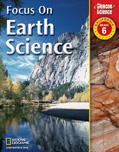1.
5.a A) mushrooms B) algae C) evergreen tree D) cactus 2.
5.b, 5.c A) bear B) squirrel C) human D) orangutan 3.
5.a, 5.e A) by eating plants B) by eating animals C) by eating plants and animals D) by being exposed to sunlight 4.
5.a, 5.b A) by making methane B) by producing carbon dioxide C) by producing water D) by producing oxygen 5.
5.a A) carbon B) heat C) nitrogen D) phosphorus 6.
5.a, 5.b A) pyramid B) chain C) web D) diagram 7.
5.a A) cyanosynthesis B) chemosynthesis C) autosynthesis D) photosynthesis 8.
5.d A) desert B) deciduous forest C) rain forest D) tundra 9.
5.a A) green plants B) ocean C) roots D) soil 10.
5.b, 5.c A) omnivore B) herbivore C) carnivore D) producer 11.
5.a A) carbon dioxide conversions B) herbivores C) carnivores D) nitrifying bacteria 12.
5.b A) on or in the roots of certain plants such as peas, clover, beans and soybeans B) in deep sea vents C) in the air D) in the stomachs of certains animals, like cows and horses 13.
5.a A) All B) Most C) Some D) No 14.
5.a, 5.b, 5.c A) tertiary consumers B) primary consumers C) secondary consumers D) producers 15.
5.a A) carbon dioxide B) simple sugars C) water D) food 16.
5.a A) There are more carnivores than the layer below. B) Each layer has less energy than the layer below. C) Each layer has less sunlight than the layer below. D) There are fewer herbivores than the layer below. 17.
5.a, 5.b A) water B) energy C) carbon dioxide D) nitrogen 18.
5.c, 5.e A) when they eat animals they have killed B) when they eat dead animals they did not kill C) when they eat plants instead of animals D) when they produce their own food







